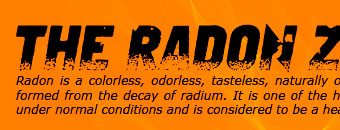 |
 |
 |
||||
|
||||||
| Call: 417-844-0942 | ||||||
|
»Television and Computer Screens Overview When you think of x-rays, you probably think of dental or medical x-rays. While the concept is the same, the x-rays that come from computer screens and televisions are at much lower levels and are not produced on purpose. Like microwaves, radio waves and visible light, the x-rays produced by an x-ray machine are a form of electromagnetic radiation. Unlike microwaves, radio waves, and visible light, x-rays are a form of ionizing radiation, which is capable of removing electrons from atoms and damaging living cells and the DNA of those cells. It should be emphasized that there is no evidence that radiation from televisions or computers has resulted in human injury. Some television sets and computer screens contain a cathode ray tube (CRT), which bounces electrons off the screen to create an image. The interaction between the electrons and the screen can potentially create low-level x-rays. CRT displays using vacuum tube high voltage rectifiers or regulators also generate x-rays. Because flat screen televisions and computer screens do not use CRTs, they do not produce x-rays. Scientists work from the premise that no amount of radiation is safe. Even though most TV sets and computer screens have not been found to give off any measurable level of radiation, the U.S. Food and Drug Administration’s Center for Devices and Radiological Health carefully sets radiation emission standards for electronic products with CRT tubes. »Smoke Detectors Overview Smoke detectors are common household items. One type, ionization smoke detectors, uses a small radioactive source as a key component in detecting smoke particles. Photoelectric smoke detectors use a light and sensor to detect smoke. Ionization smoke detectors are more effective at detecting flash fires, while photoelectric smoke detectors are more effective in detecting smoldering fires. Both cost about the same, and many smoke detector models use both ionization and photoelectric features to achieve maximum detection. Remember Always use a smoke detector in your home! The radionuclide used in ionization smoke detectors is an oxide of americium-241, which is bonded to a metallic foil and sealed in an ionization chamber. As long as you use the smoke detector as directed and do not open it, it poses no radiation health risk to humans--always use a smoke detector in your home. Americium-241 is a man-made radioactive metal, first discovered during the Manhattan project, the national program that first developed atomic weapons during World War II. Americium-241 emits alpha particles and low-energy gamma rays. The smoke detector alarm goes off when the flow of alpha particles is interrupted by smoke particles. |
|
|||||